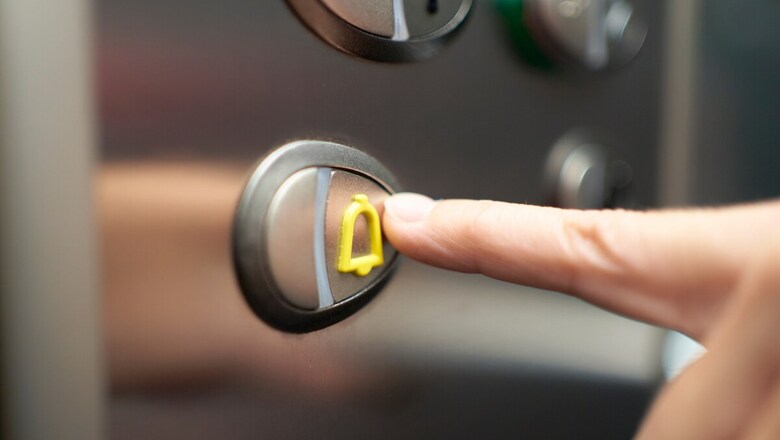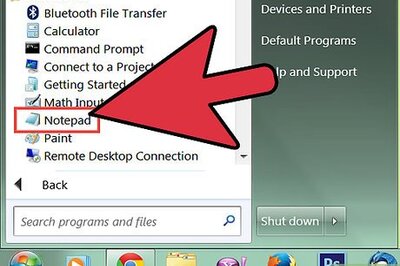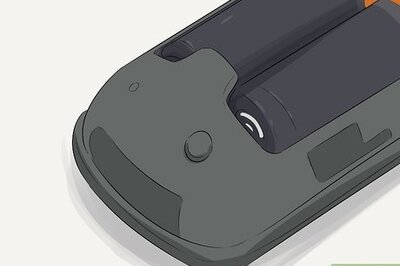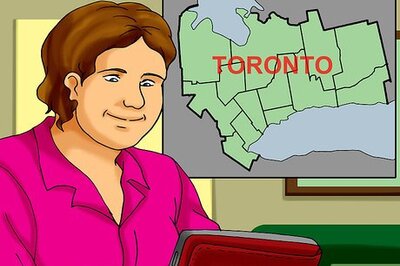Noida's Nasty Lifts Part-2: Calls for Maintenance, Law & Accountability, As Safety Concerns Escalate

views
Noida residents are growing increasingly alarmed as a series of recent lift accidents in high-rise apartments have resulted in fatalities and injuries, underscoring the urgent need for concrete guidelines and accountability measures to address a range of issues.
Rajiva Singh, president of the Noida Federation of Apartment Owners Associations (NOFAA), acknowledged the longstanding issue of lift maintenance, noting two key contributing factors to the escalating problem. “The issue has been there for some years but it has scaled up. There are two reasons for this: more people are now living in high-rise apartments, and secondly, older societies, 20-25 years old, have lifts that are deteriorating due to a lack of upgrades. AOAs are always tight on funds, and they never have enough for the significant cost of lift replacement. The absence of clear guidelines compounds the problem,” he said.
Singh emphasised the need for the Uttar Pradesh Lift Act to provide comprehensive regulations that manufacturers of the lifts or OEMs and AOAs can follow. He also proposed that the Noida administration issue maintenance guidelines to all AOAs for integration. “The problem AOAs face is that they do not know the technical details of lifts, such as weight capacity and usage limits. There should be regulations for all high-rise apartments to follow to ensure safety,” he said.
The NOFAA head pointed out that while the UP Lift Act may not eliminate accidents entirely, it would set a precedent for safety standards. “Without traffic laws, there would be chaos on the roads, but laws help to restrict such incidents. Similarly, guidelines for lift maintenance would provide clarity and a proper course of action,” Singh added.
Singh also shed light on the absence of Automatic/Emergency Rescue Devices (ARD/ERD) in older lifts, which could prevent passengers from becoming trapped during a power failure. Singh himself experienced such an incident, noting that sometimes battery backup systems fail due to inadequate charging.
Sachin Goyal, vice president of NOFAA, shared insights into the challenges AOAs face when dealing with lift maintenance. He noted that builders often fail to adhere to maintenance contracts and use lifts for construction activities, leaving them in poor condition when residents take over. Goyal mentioned that despite raising these concerns since 2014, there is still no Lift Act in place.
Goyal also highlighted the issue of accountability, saying once the builder hands over operations to residents, the responsibility for lift maintenance shifts to the AOAs. But what happened in Paras Tierea Society was that the AOA president was arrested and faced a criminal case despite the fact that the builder transferred the power only three months ago. According to him, that is the problem with not having guidelines or a Lift Act in place to understand who should be held accountable in such situations.
“There were cases when the builder was still present in the scenario and the lift was stuck for 15-20 minutes. We went to the police station and they refused to take our complaint. They said there is no Lift Act, therefore no case. Similarly, in the case of Amrapali Dream Valley, who was held responsible for the deaths and the incident? The technician who was coming to maintain that lift. But what about the agency that hired the technician? What about the builder who hired that agency?” Goyal said.
However, he suggested that lift maintenance contracts should ideally remain with OEMs, ensuring accountability and proper upkeep. Goyal pointed out that an essential aspect of the proposed Lift Act should include regular technical reviews by OEMs, along with proper training for guards and residents on how to react in case of lift malfunctions. Just like fire drills, he also believes there should be drills for lift malfunction and all these should be addressed in guidelines that all the apartments will be following.
Additionally, Goyal and Singh both emphasised the importance of regular audits conducted by lift maintenance agencies as a vital safety measure. They contend that monthly or bi-monthly technical reviews, carried out by OEMs, would help identify and rectify potential lift issues proactively. These audits could serve as a crucial preventive measure, ensuring that lifts are consistently in optimal working condition, thereby reducing the risk of accidents. Such audits would not only enhance safety but also establish a clear framework for accountability and maintenance, addressing long-standing concerns in Noida’s high-rise apartment communities. However, they also noted that there should be someone from the government authorities who can check these reports and understand the technical language which will help the AOAs to function swiftly.
Despite the pressing need for safety measures, a significant issue highlighted by both Singh and Goyal is the lack of space in some high-rise society lifts to accommodate a stretcher. Rajiva Singh cited a real-life challenge where a lift lacked the necessary space for a stretcher, a deficiency that poses a serious obstacle during emergencies. This underscores the need for comprehensive guidelines that not only ensure the proper maintenance of lifts but also mandate sufficient space for crucial medical procedures, thus ensuring the safety and well-being of residents in high-rise apartments.
Umashankar Sharma, president of Silvercity Apartment and secretary of the Legal Federation of Noida Residents Welfare Association (FONRWA), also highlighted the importance of a Lift Act in addressing issues stemming from the city’s rapid development. Similar to Singh and Goyal, he also underscored the need for clear guidelines on lift maintenance and encouraged training for guards and residents on proper lift safety protocols.
“AOAs are volunteer bodies responsible for coordination, not technical lift maintenance,” he said. “Guidelines and accountability measures need to be defined for society maintenance agencies and lift maintenance agencies to function effectively. Until authorities set clear accountability and penalties for mishaps, change will be difficult to achieve.”
Sharma further raised concerns about AOAs being unfairly held accountable in the absence of a governing body to manage and guide their operations. He believes it is because AOAs are soft targets while the builders and the lift maintenance agencies use their monetary and legal power to escape a critical situation. So, along with Goyal, he also called for the establishment of a government body to provide guidance and oversight which will not only help reduce the burden of the Noida administration which looks after many areas but also AOAs will be able to understand the roadmap.
As the population in Noida continues to grow, so too does the need for comprehensive lift maintenance regulations and accountability measures. While locals appreciate recent efforts to address the issue, they believe that the implementation of a Lift Act and associated guidelines are crucial to ensuring the safety of all high-rise residents in Noida. However, some BJP leaders like Pankaj Singh have raised the Lift Act issue in the Uttar Pradesh assembly and to chief minister Yogi Adityanath. Since during the last session of the state assembly this issue was addressed, residents are now hoping that in the upcoming session, they may see the bill to be placed on the table.



















Comments
0 comment